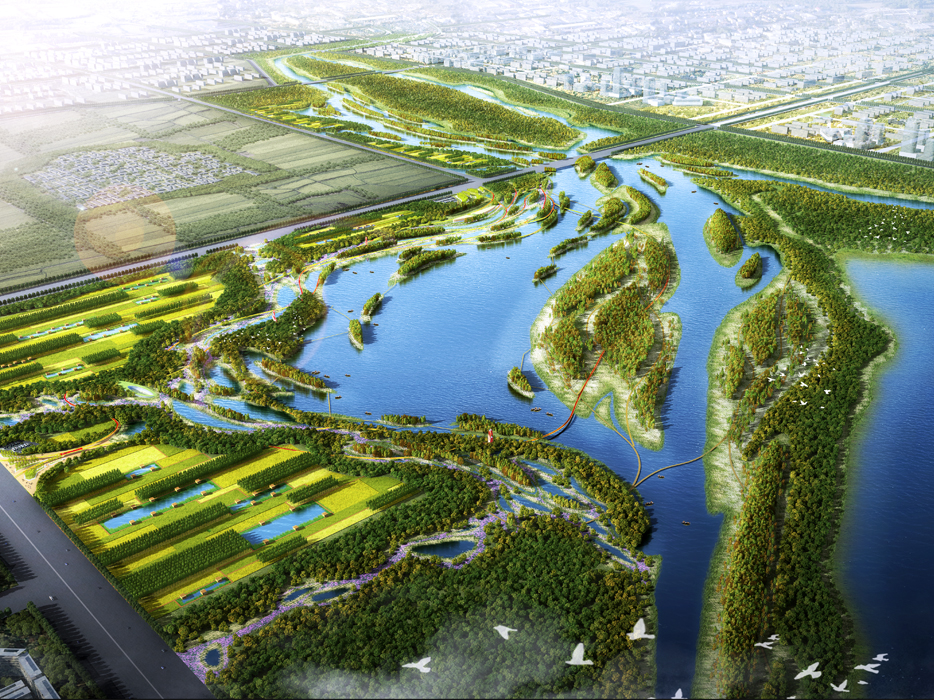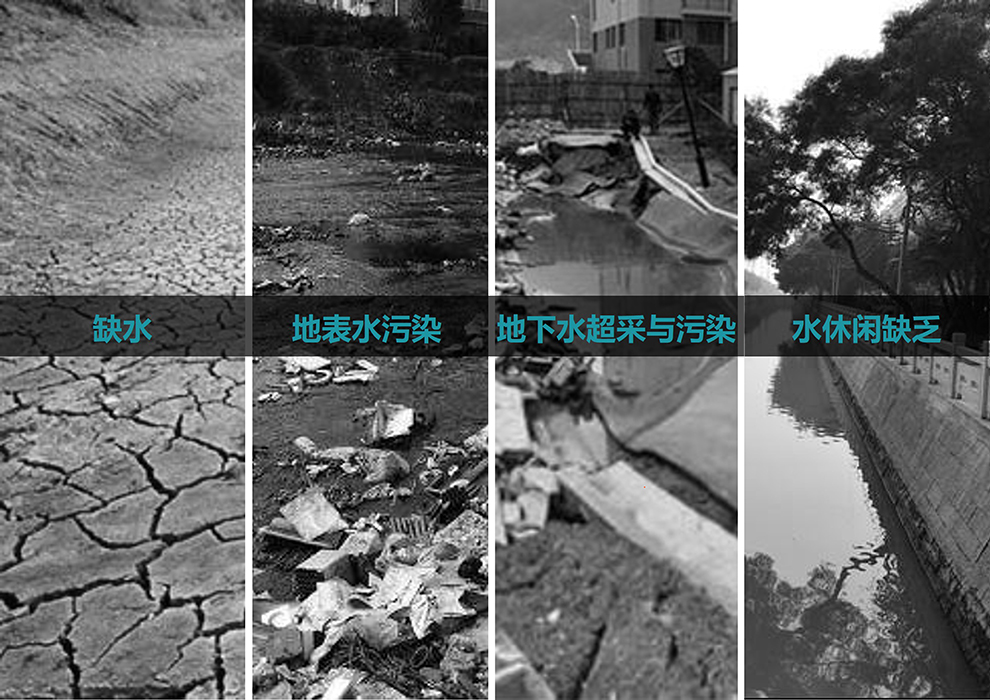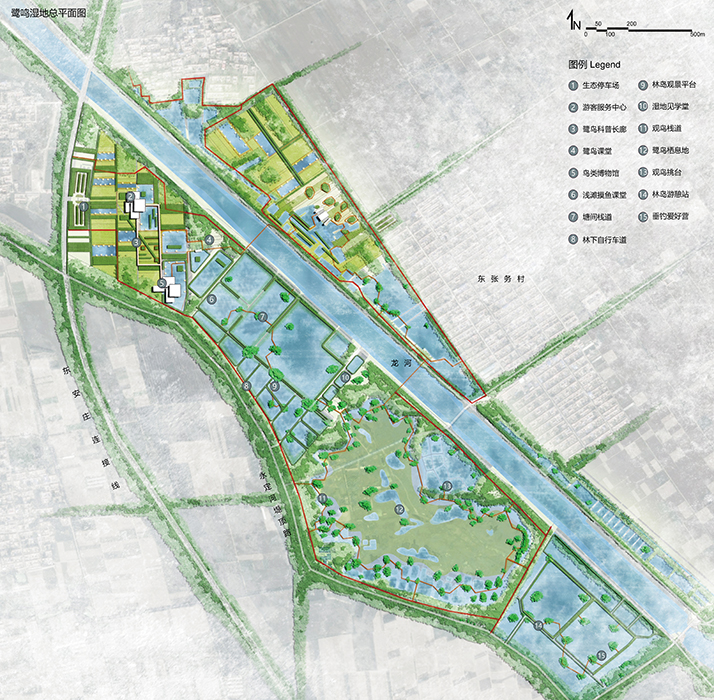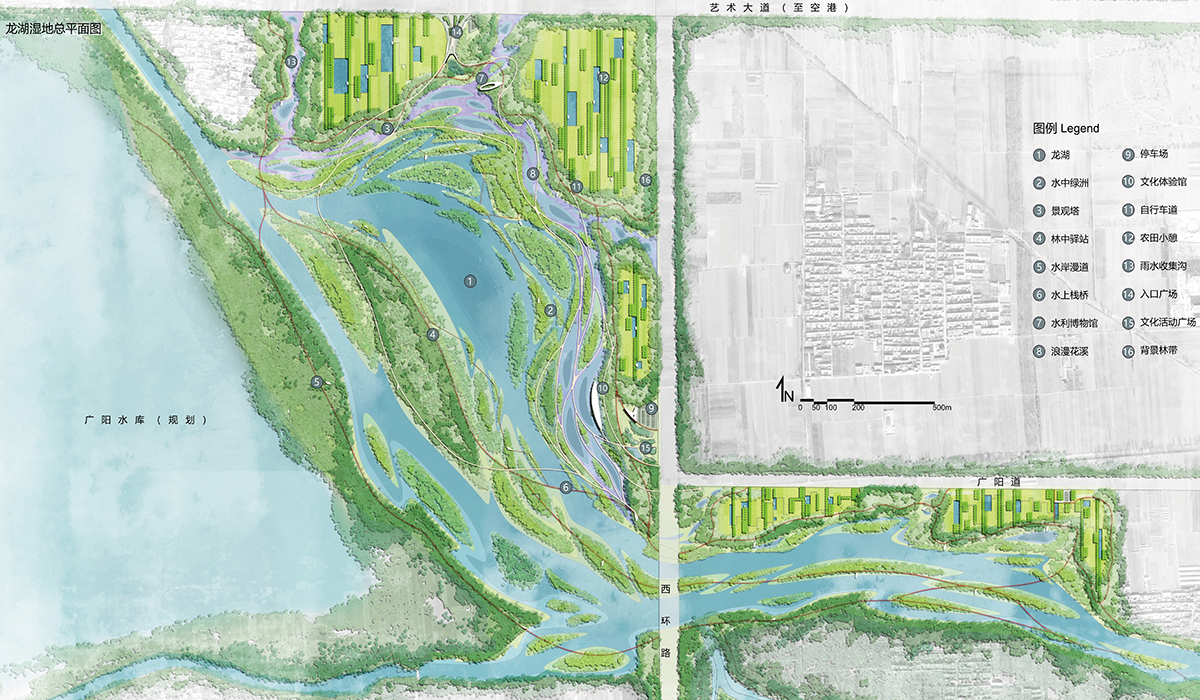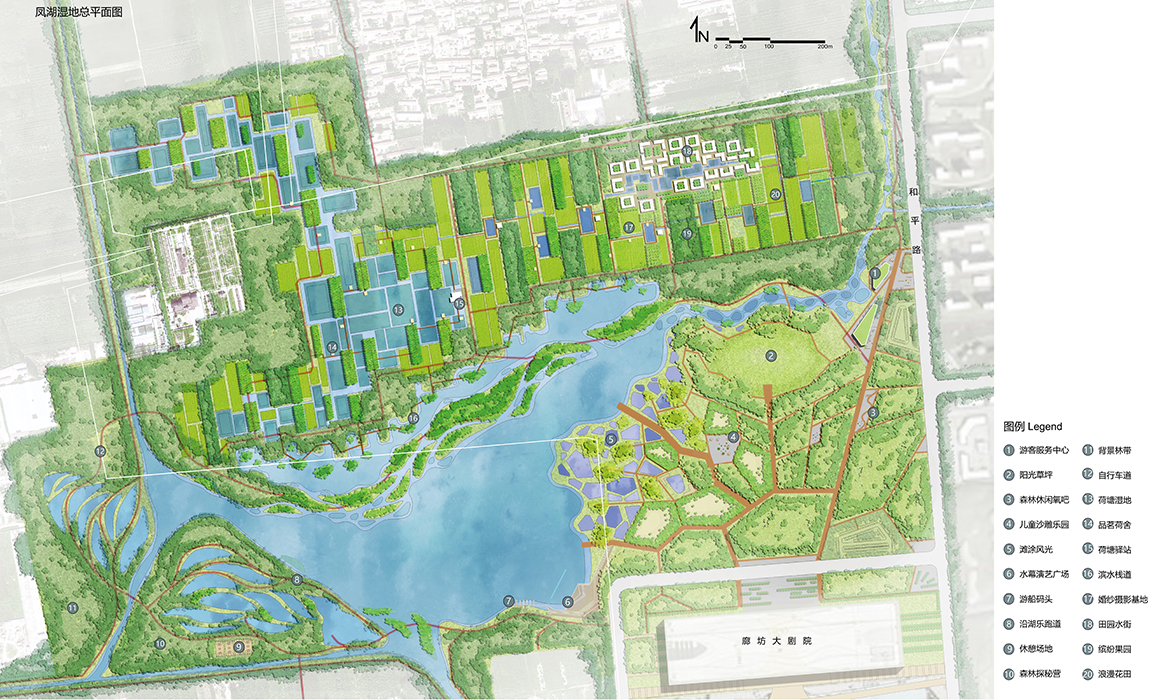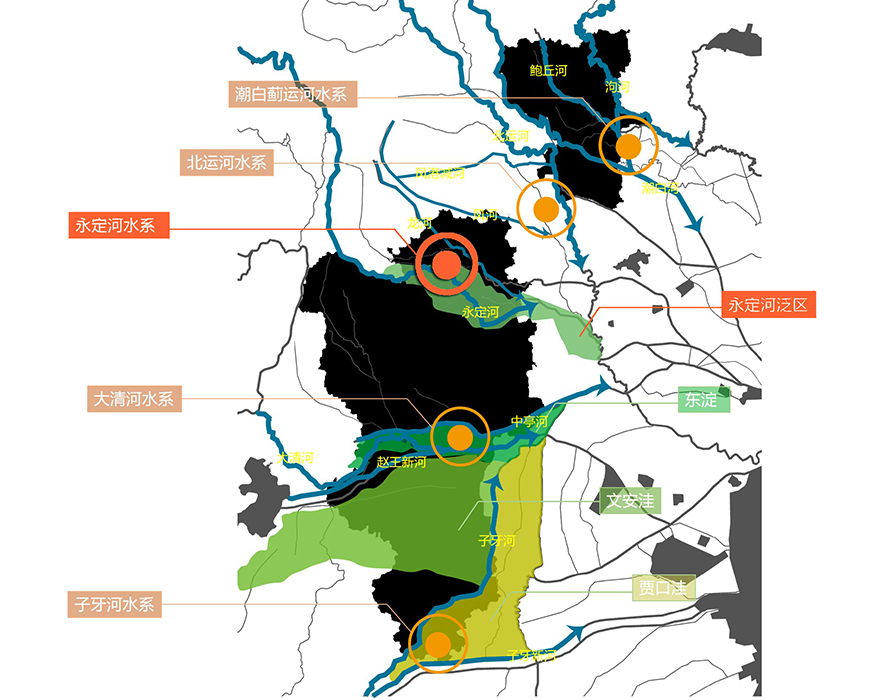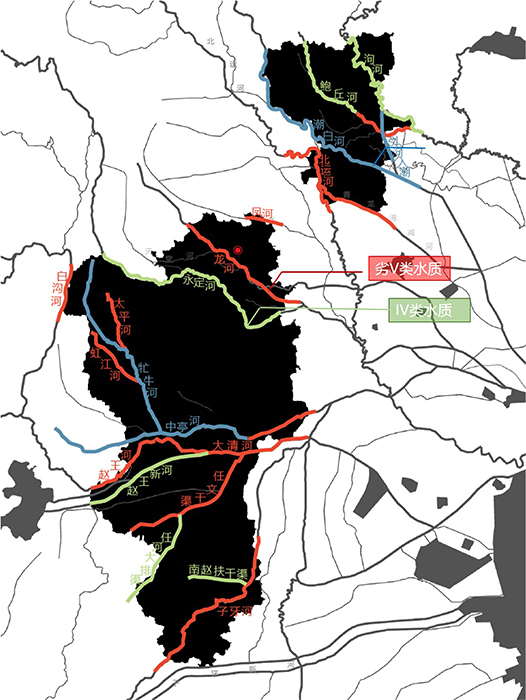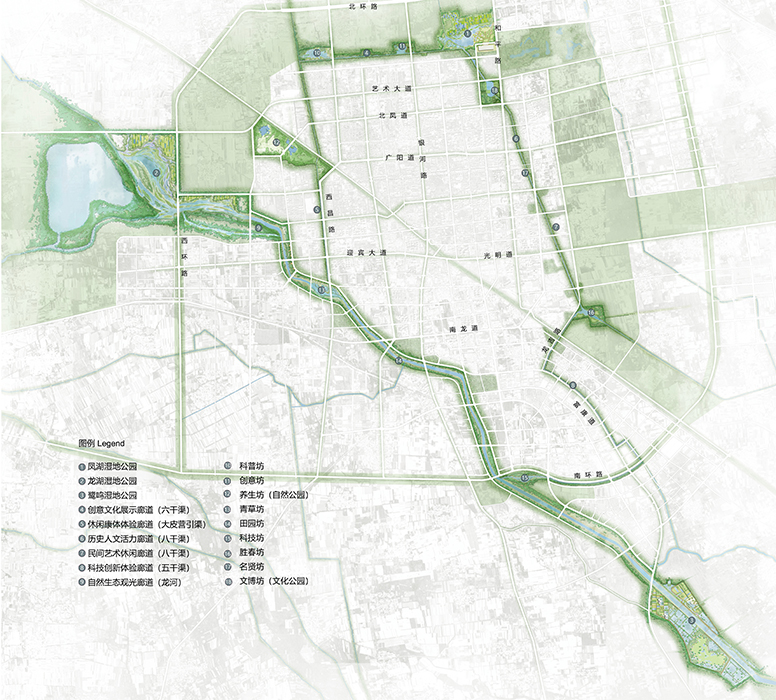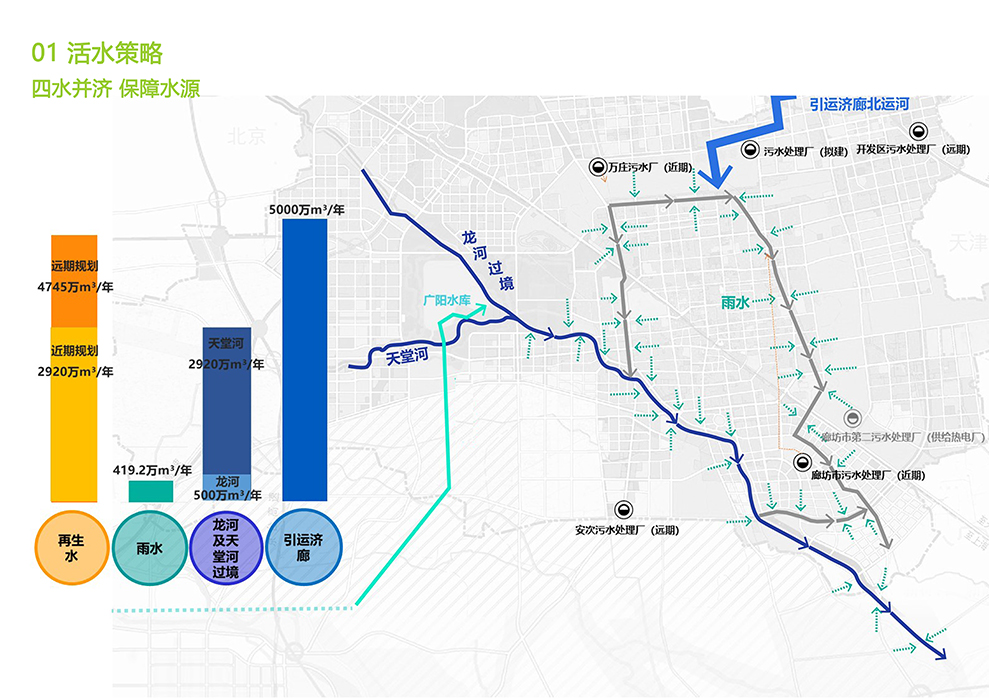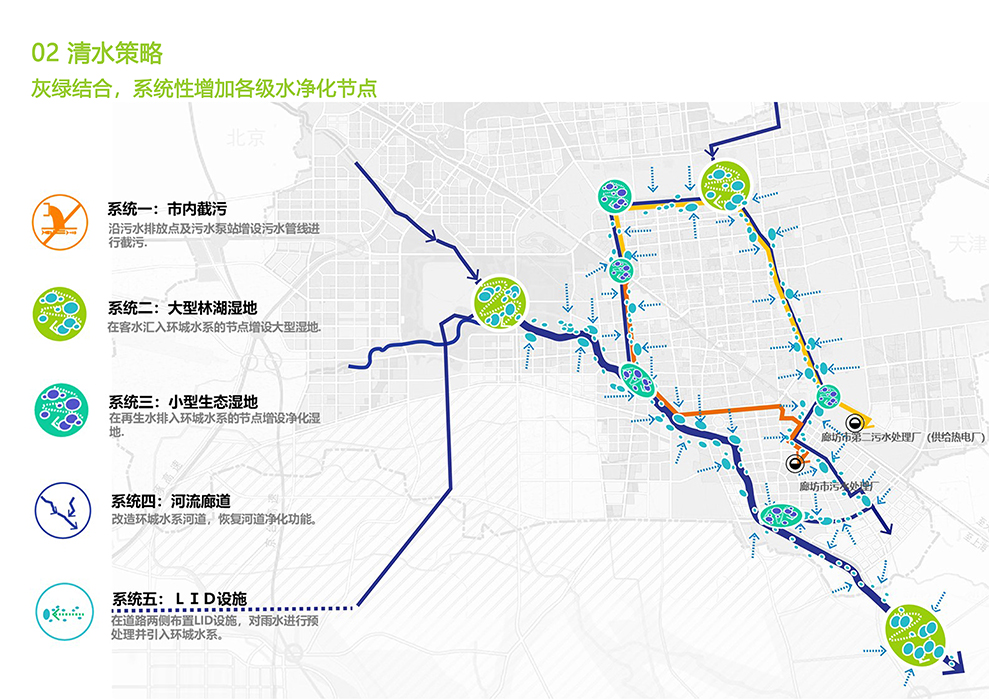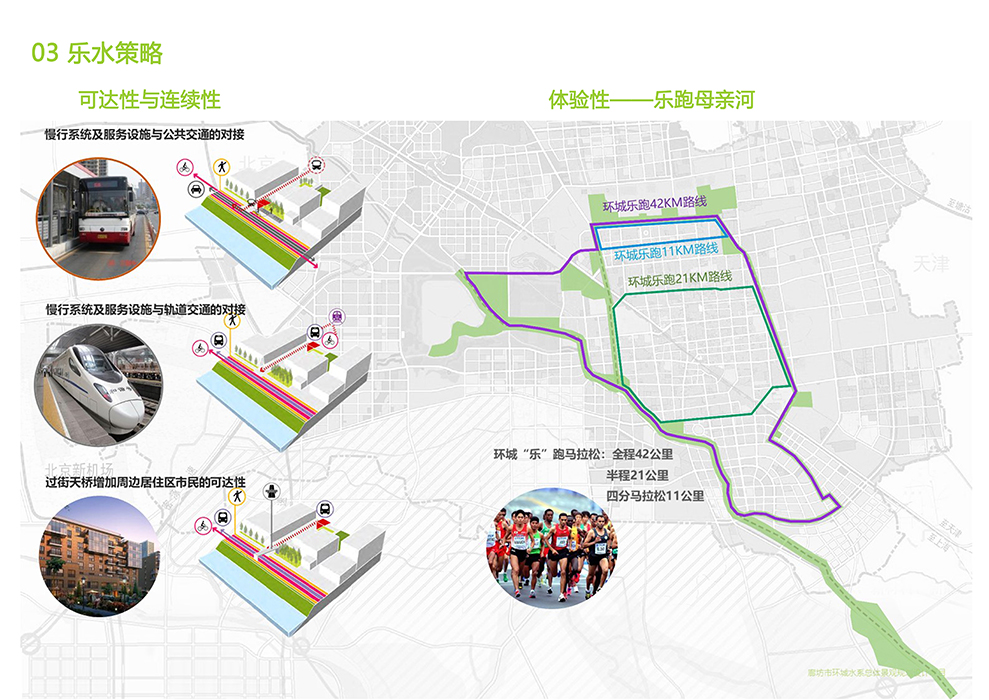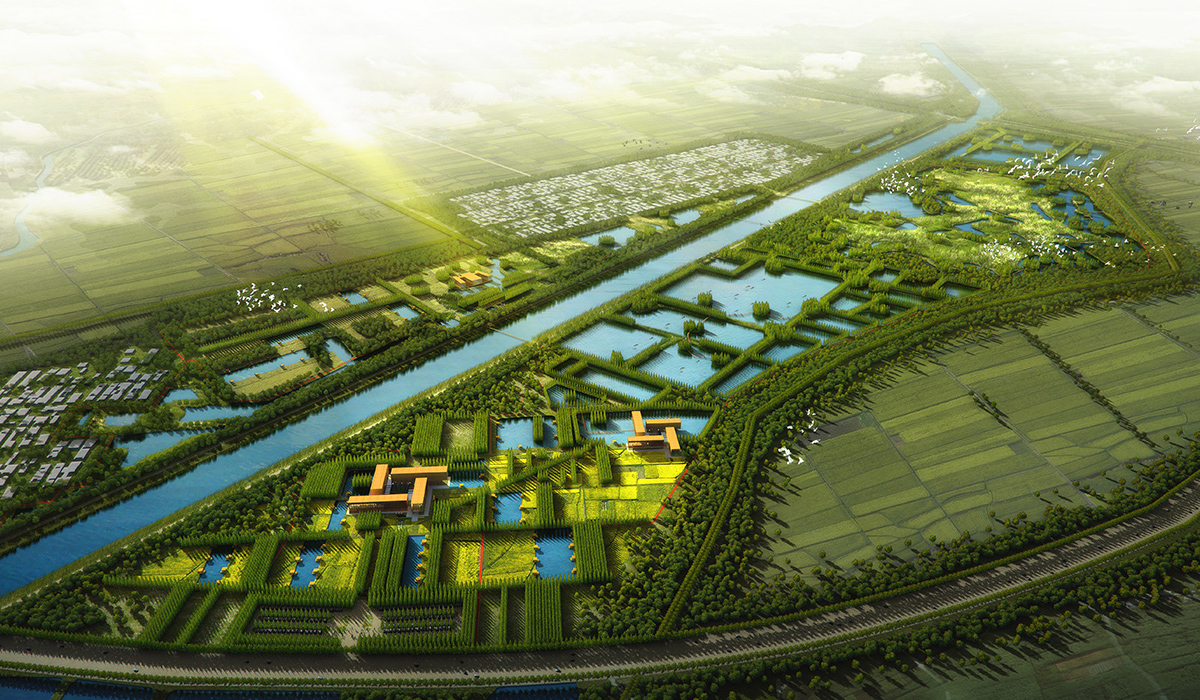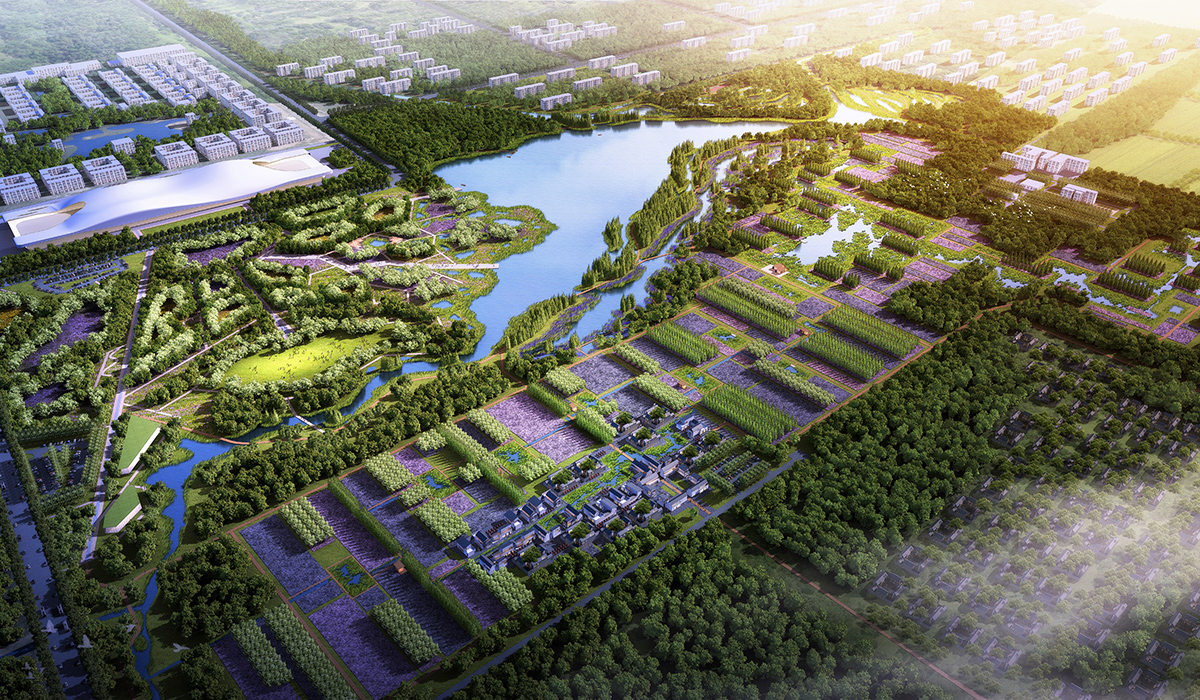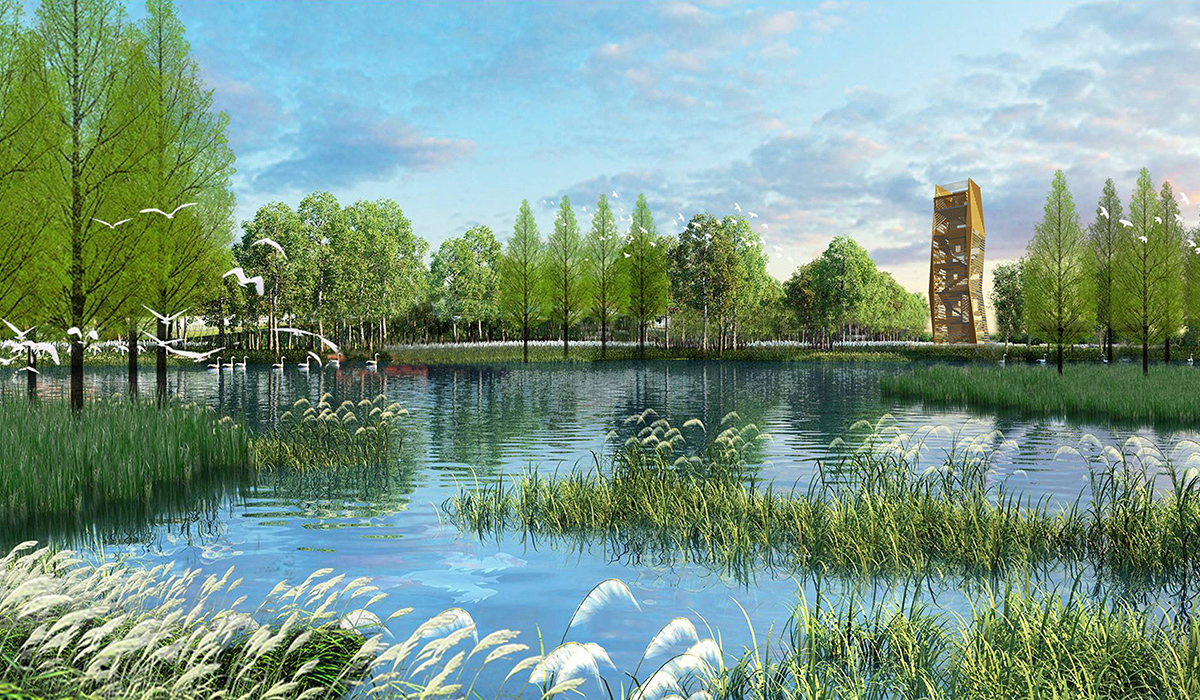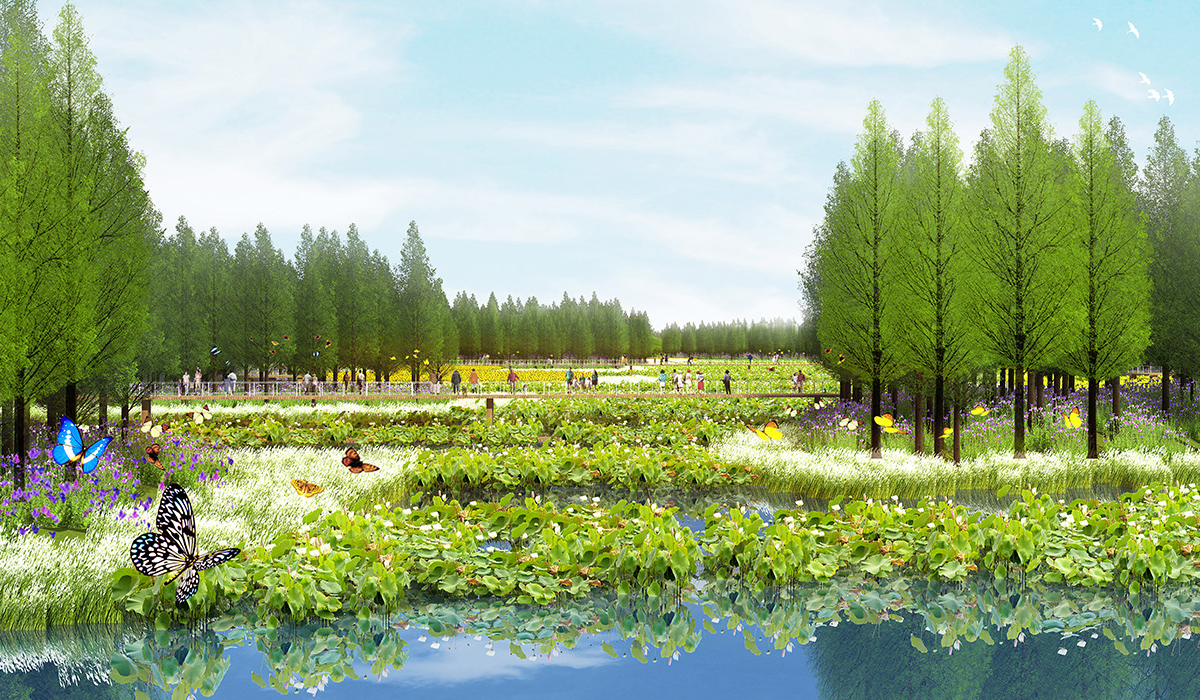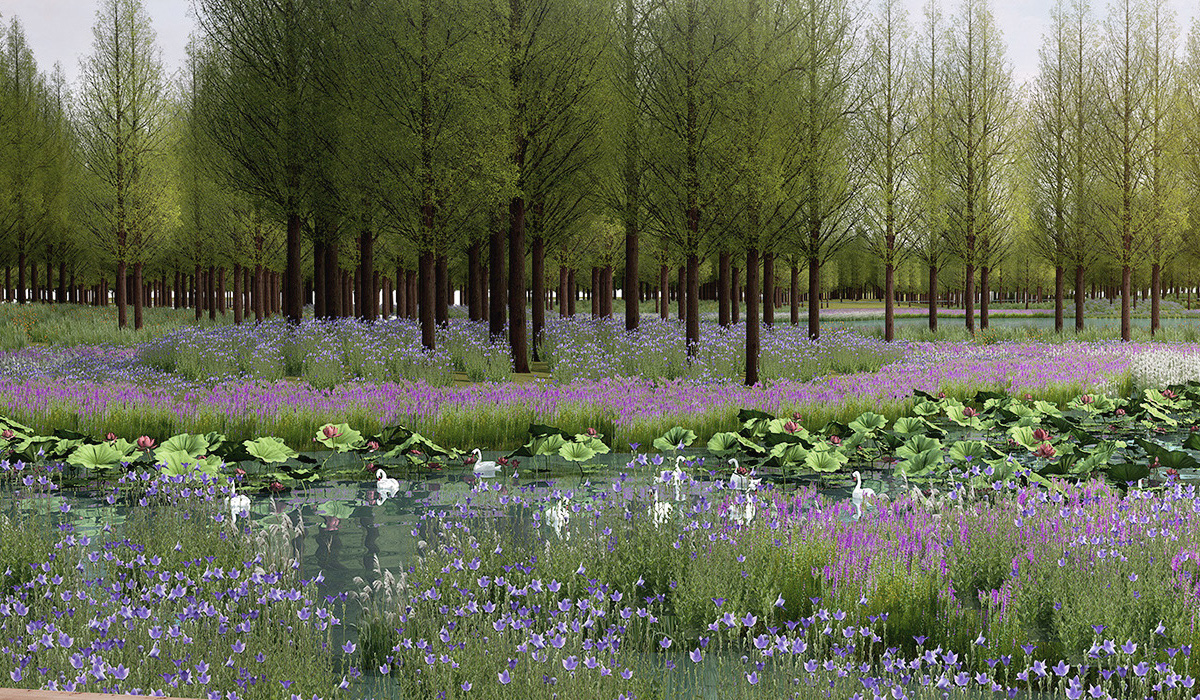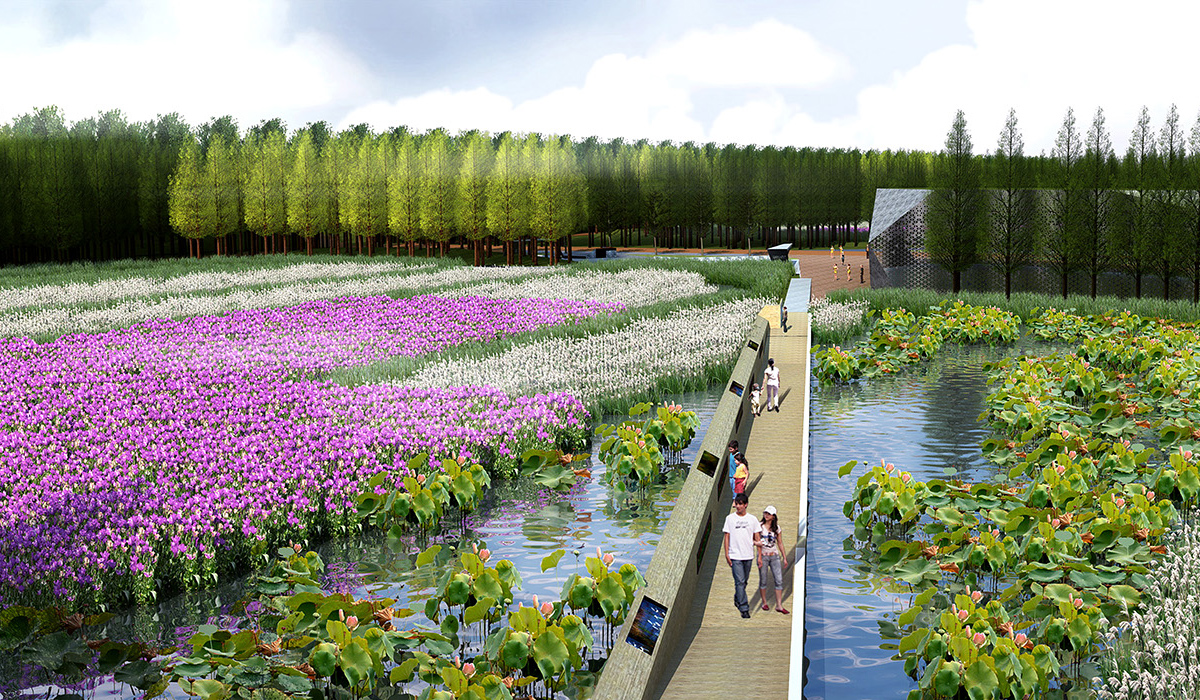Langfang Circular Urban Water System Landscape Planning
Project Information
- Project Location:
- China Langfang, Hebei
- Project Scale:
- 48 Kilometers
- Design Time:
- November 2015
- Client:
- Langfang City Water Affairs Bureau
Project Profile
1. Project Statement
The circular urban water system in Langfang City includes the Xihuan River (Dapiying Diversion Channel) on the west side, the Beihuan River (Sixth Channel) on the north side, the Donghuan River (Eighth Channel) on the east side, the Nanhua River (Fifth Channel) on the south side, and the Long River. The total length is 48.3 kilometers, with the Xihuan River at 6.8 kilometers, the Beihuan River at 4.8 kilometers, the Donghuan River at 9.4 kilometers, the Nanhua River at 5.5 kilometers, and the urban section of the Long River at 21.8 kilometers.
The planning of the circular urban water system adheres to the scientific concept of prioritizing ecology, green development, and harmonious coexistence between humans and water. The goal is to create a new ecological environment for Langfang citizens characterized by "clear water around the city, green banks, fragrant flowers in three seasons, evergreen in four seasons, and beautiful water landscapes."
2. Design Strategy
(1). Systematic Construction of "Water Area Connectivity"
External Connectivity: Connect with external water resources to enhance water source security and build a regional water safety framework. The circular urban water system can also serve as ecological supplementary water for the Yongding River green corridor.
Internal Connectivity: Connect the water system into a ring to activate the water. Additionally, link with the forest network to form an integrated ecological framework of water, forest, farmland, and lake.
(2). Scientific Provision of "Special Water Guarantees"
Water Activation Strategy: Utilize four water sources to construct a water resource system. This design makes use of reclaimed water, rainwater, and transit water, combined with the sponge city concept, to enhance water resource utilization efficiency by using water instead of replacing it.
Water Purification Strategy: To address the canalization of the circular urban water system, which lacks purification capacity, and the pollution from sewage, rainwater, and other transit water, a multi-level purification and treatment system (sewage interception system, large forest and lake wetlands, small artificial wetlands, river corridors, LID facilities) is designed to comprehensively resolve existing water quality issues.
Water Enjoyment Strategy: The design increases the accessibility and continuity of the riverside slow travel system and enriches recreational activities along the river.
Water Regulation Strategy: Integrate the design with the overall urban planning and land use planning, delineate green lines along the river, and control segments of the circular urban water system according to existing construction conditions, proposing design guidelines for each segment's core issues.
3. Landscape Features
The design, combined with the upper-level planning, reorganizes and reconstructs the landscape structure of "one ring, one river, three parks, six corridors, and nine blocks," with a focus on the landscape wetland nodes of the "three parks."
One Ring: The circular urban water system, consisting of the Xihuan River, Beihuan River, Donghuan River, Nanhua River, and the urban section of the Long River. By dredging, expanding, and protecting the 39.3 kilometers of these five rivers' untreated sections and constructing jogging paths, cycling paths, walkways, and landscape belts along the riverbanks, a large water network pattern of connected rivers, circling water, and landscape-driven development is formed.
One River: The Long River, running through Langfang City. By conducting ecological restoration and landscape construction on the 21.8-kilometer section of the Long River (from the western outer ring to the Dongzhangwu section), an 80 to 150-meter water surface landscape is created, aiming to make the Long River a vibrant and dynamic inner river and mother river of Langfang City.
Three Parks: Luming Wetland Park, Longhu Wetland Park, and Fenghu Wetland Park.
Luming Wetland Park: Aimed to become a national wetland park and a demonstration area for migratory bird protection in the Beijing-Tianjin-Hebei region. The design revolves around the themes of "migratory bird protection, wetland leisure, and science education."
Longhu Wetland Park: The design not only creates beautiful Longhu scenery but also preserves water culture and dragon cultural heritage.
Fenghu Wetland Park: Focused around the Fenghu Lake area, the park leverages four major tourism resources—"farmland, forest ponds, lotus sea, and water street"—to create a comprehensive wetland park that integrates farmland culture, waterfront leisure, wetland sightseeing, and outdoor exploration.
Six Corridors: Ecological corridor, historical corridor, cultural corridor, technological corridor, natural corridor, and dragon culture corridor.
Nine Blocks: Cultural heritage block, famous figures block, folk art block, technological block, gourmet block, dragon block, music and sports block, four-season block, and ecological block.
4. Conclusion
The planned Langfang circular urban water system will be transformed into a "clear water ring" respecting nature and embodying green sponge principles, a "green path" that is continuously accessible and connects the city, a "string of pearls" with diverse functions for citizen recreation, and an "intelligent city" with technological innovation and convenient living. The project aims to achieve the construction goal of "clear water around the city, green banks, fragrant flowers in three seasons, evergreen in four seasons, and beautiful water landscapes," creating a provincial and national water conservancy scenic area with unique Langfang charm.
